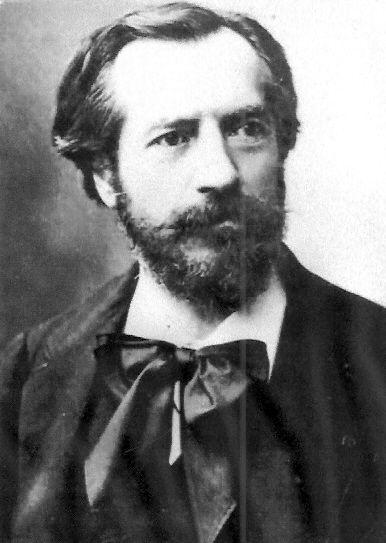Frédéric Auguste Bartholdi (Frédéric Auguste Bartholdi)

French sculptor renowned for his monumental works, the most famous being the Statue of Liberty. Frederic Auguste Bartholdi was born at Colmar, in Alsace, France, on April 2, 1834. At first he studied painting, but soon abandoned it for sculpture under the influence of the Parisian, Jean Francois Soitoux, working from the very first on a colossal scale and with architectural effects. When Bartholdi was 20 years old he traveled in Egypt and studied Egyptian art. He made a second trip to Egypt in 1868. He was further impressed by the ruins and colossal monuments which he saw and the principles which had controlled their conception. At a dinner party in 1865, Bartholdi and his host, historian Edouard-René de Laboulaye, had conceived the idea of France giving the US a monument for its Centennial of 1876. In 1871 Bartholdi visited America to seek inspiration and support. Before his ship docked in New York Harbor, he had finished his first sketches for a colossal statue and had chosen Bedloe’s Island as its site. Although most Americans (including President Grant) did not share his enthusiasm for the project, Bartholdi returned to France undaunted. There, he refined his designs while de Laboulaye organized a special lottery that raised $400,000. Construction began in late 1875. On February 18, 1879, the French sculptor earned US Patent #11,023 for a “Design for a Statue.” This statue, “Liberty Enlightening the World,” would become one of the most famous monuments of world history. Bartholdi’s major innovation was to build a shell of thin copper plates supported by a sturdy steel frame, with ingenious slip joints to allow for thermal expansion — for the 151-foot, 225-ton statue would have to be shipped and reassembled across the Atlantic. Bartholdi’s team hand-worked 300 sheets of copper for the shell. The inner framework was supervised by master builder Alexandre Gustav Eiffel, who would later build Paris’ great Tower. Only the torch-bearing arm of the statue was ready for display at the Centennial in Philadelphia, but the entire statue was finished in early 1884. The next year, the statue was dismantled and shipped in dozens of enormous crates to New York and stored on Bedloe’s Island. But the statue’s base was not completed until April 1886, after a campaign for contributions led by immigrant newspaperman Joseph Pulitzer. The Statue was inaugurated by President Grover Cleveland on October 28, 1886. Emma Lazarus’ verses, “Give me your tired, your poor. . .,” were added in 1903. In 1956, Bedloe’s Island was renamed Liberty Island. In 1983-86, the Statue was completely renovated for its own Centennial. In addition to the Statue of Liberty, there are other works of Bartholdi in America—the Bartholdi Fountain in the Botanic Garden, Washington, D. C.; the four angelic trumpeters on the four corners of the tower of the First Baptist Church, Boston, Mass.; and the Lafayette Statue, in Union Square, and the Lafayette and Washington Monument, at Morningside Park, both in New York City. (bio by: Edward Parsons) Cause of death: Tuberculosis
Born
- August, 02, 1834
Died
- October, 10, 1904
Cause of Death
- Tuberculosis
Cemetery
- Cimetière de Montparnasse
- France

